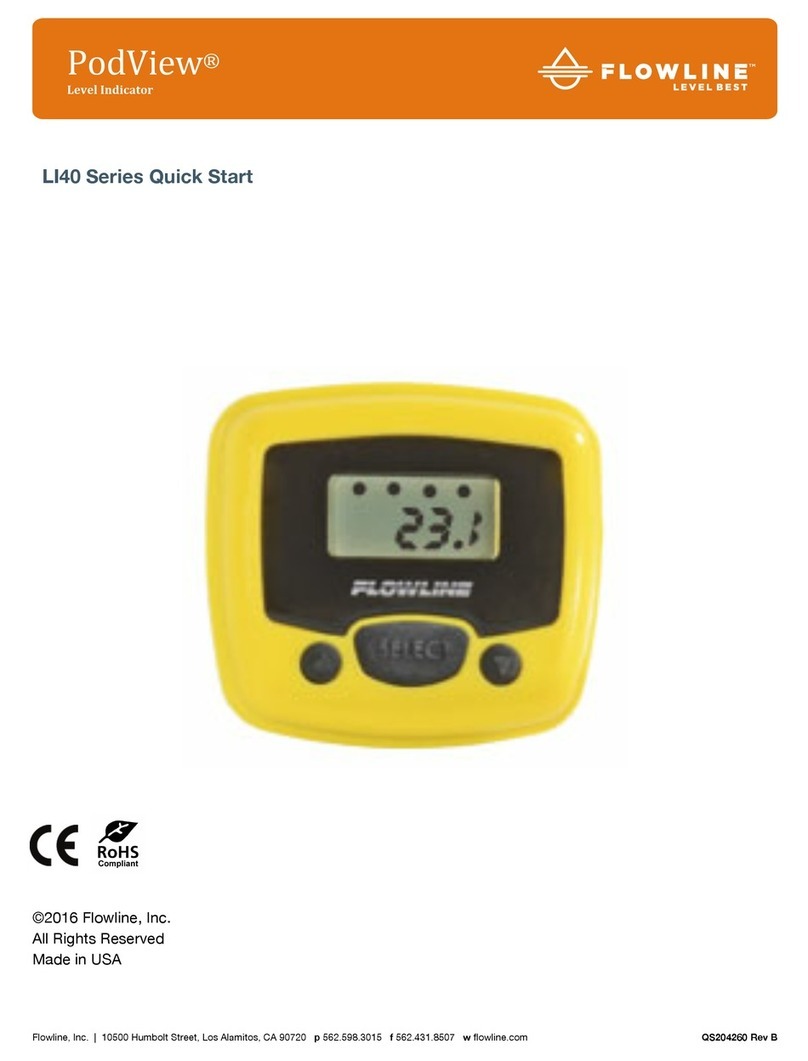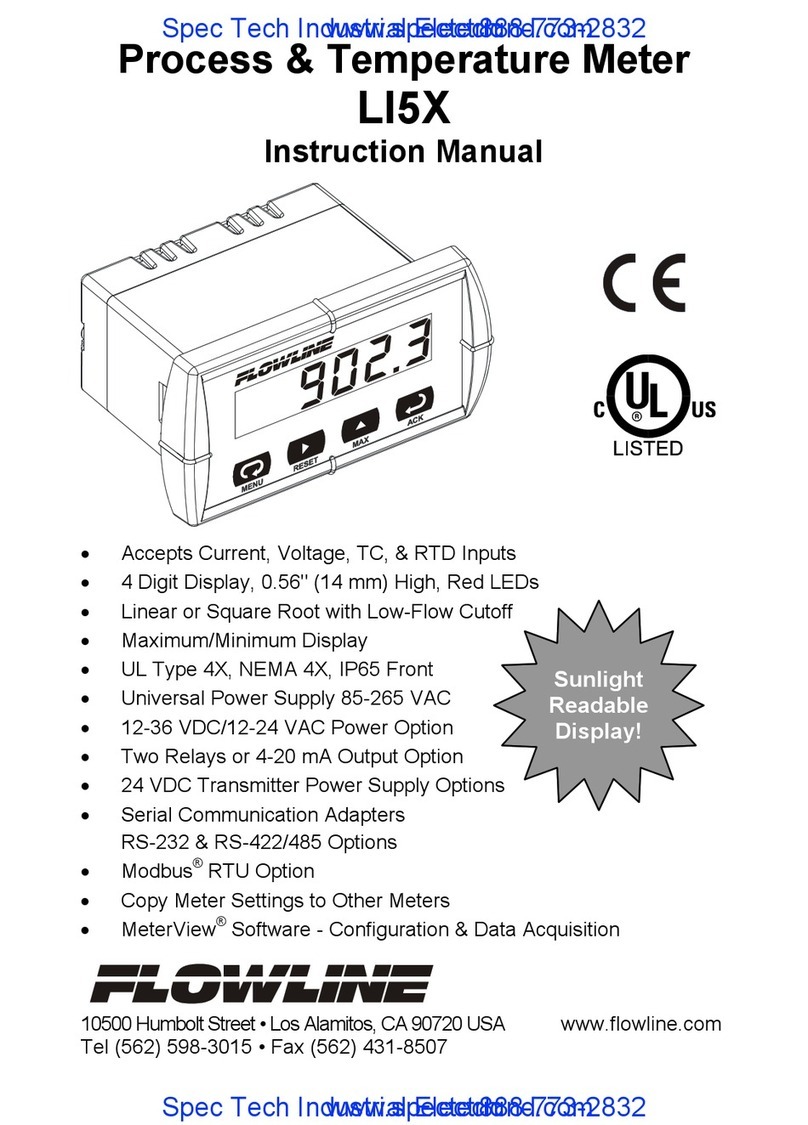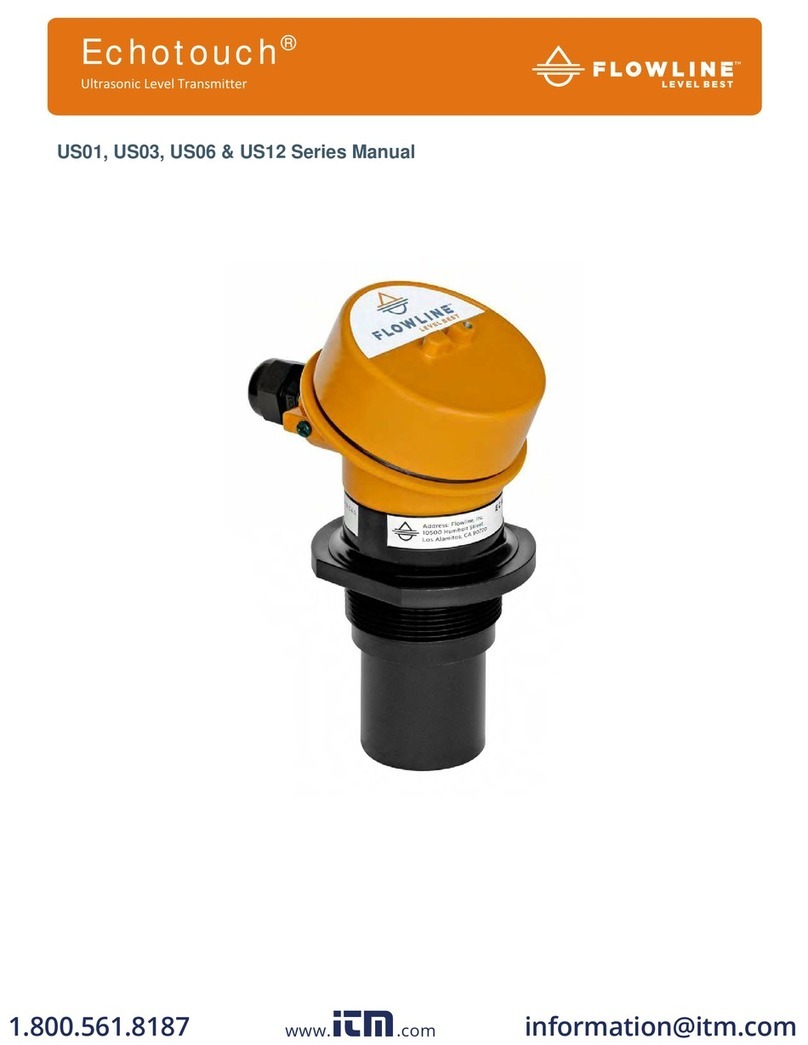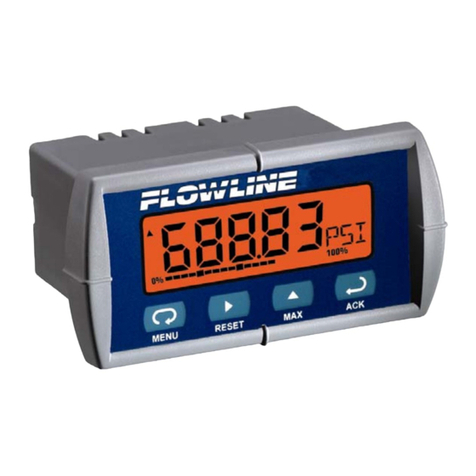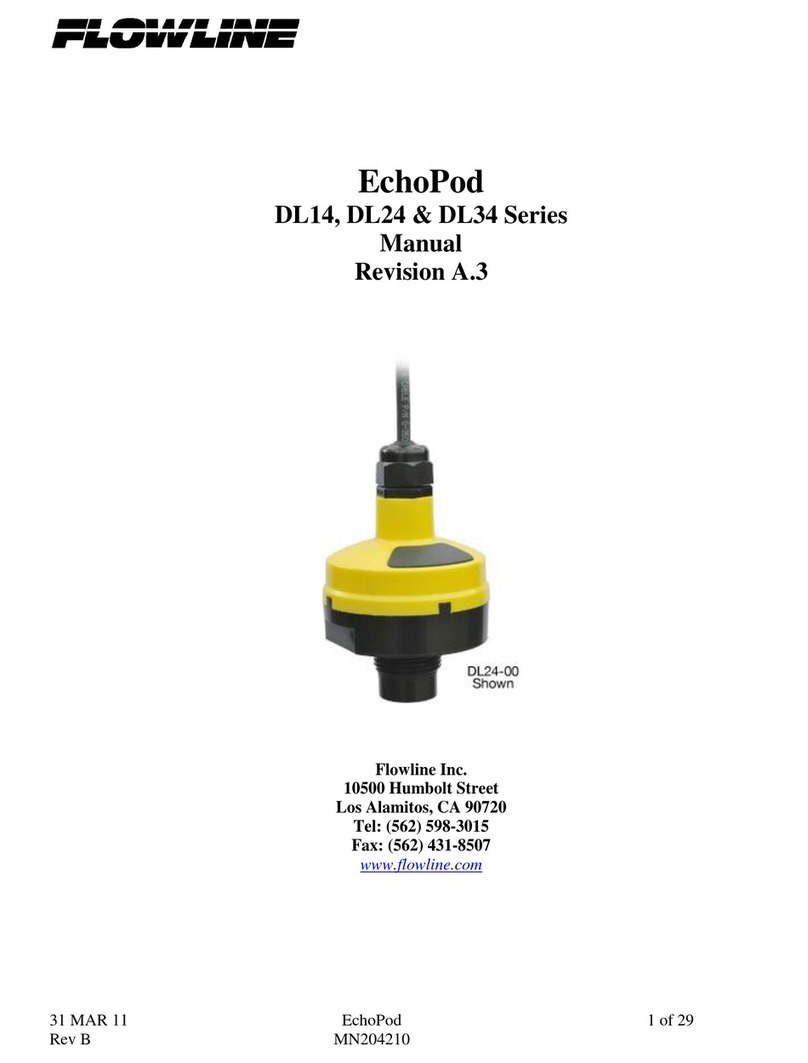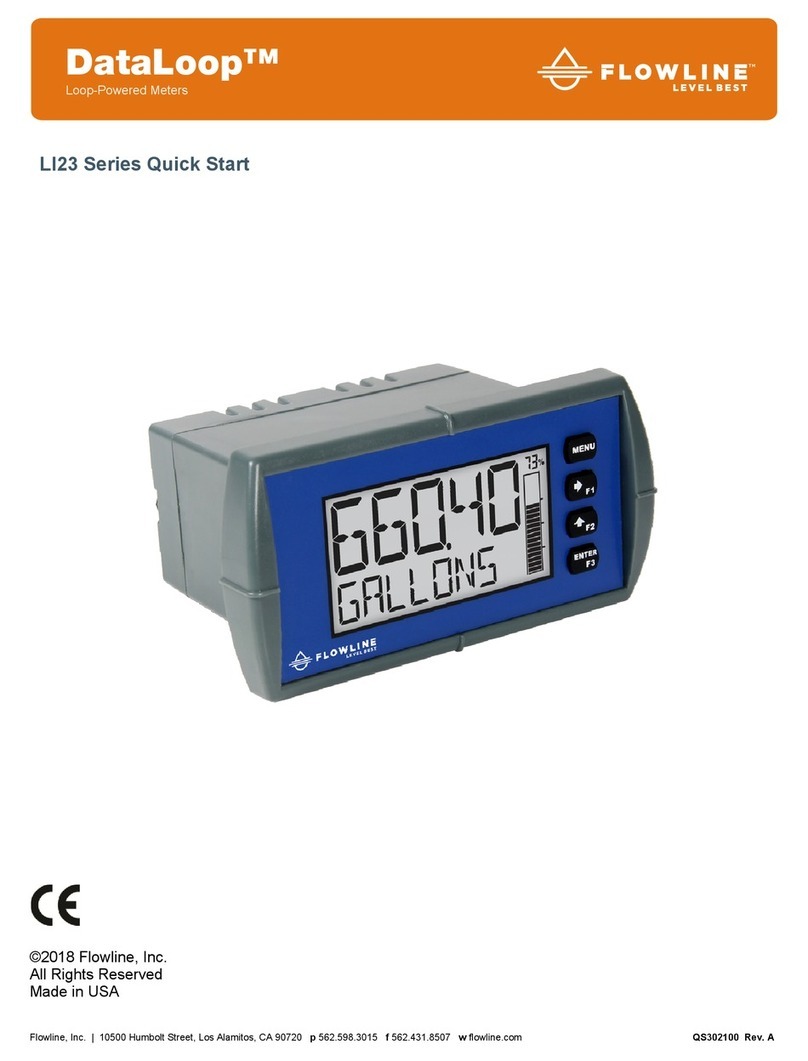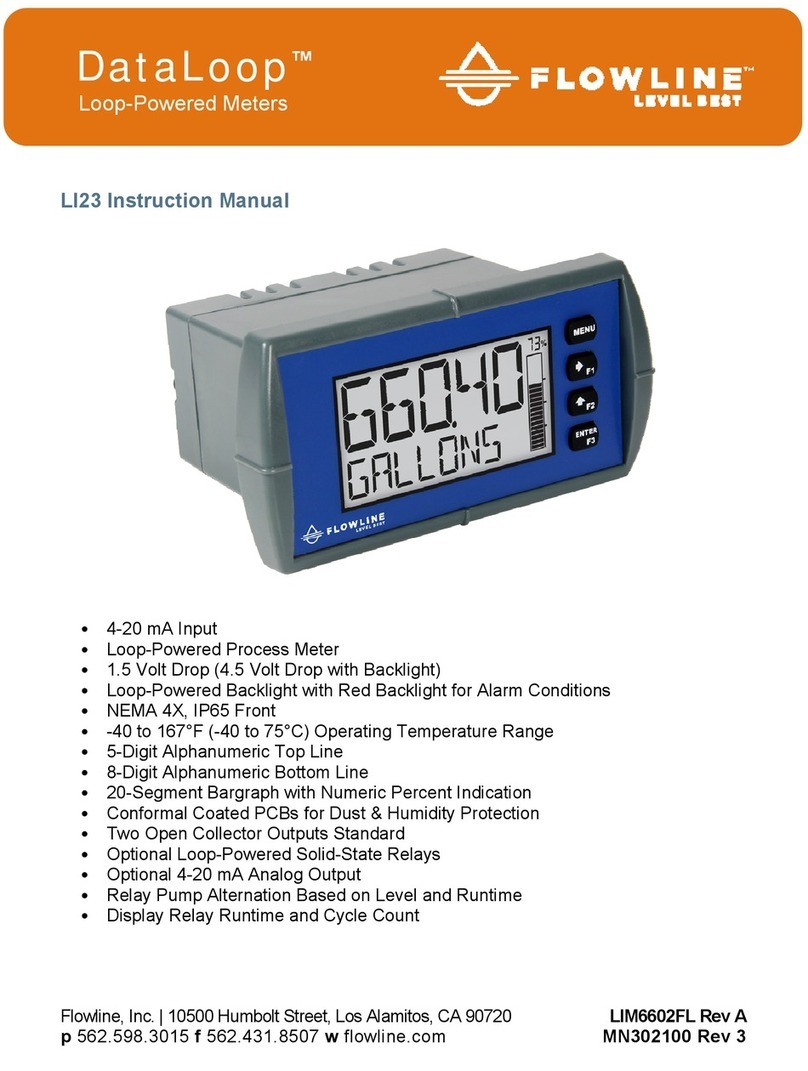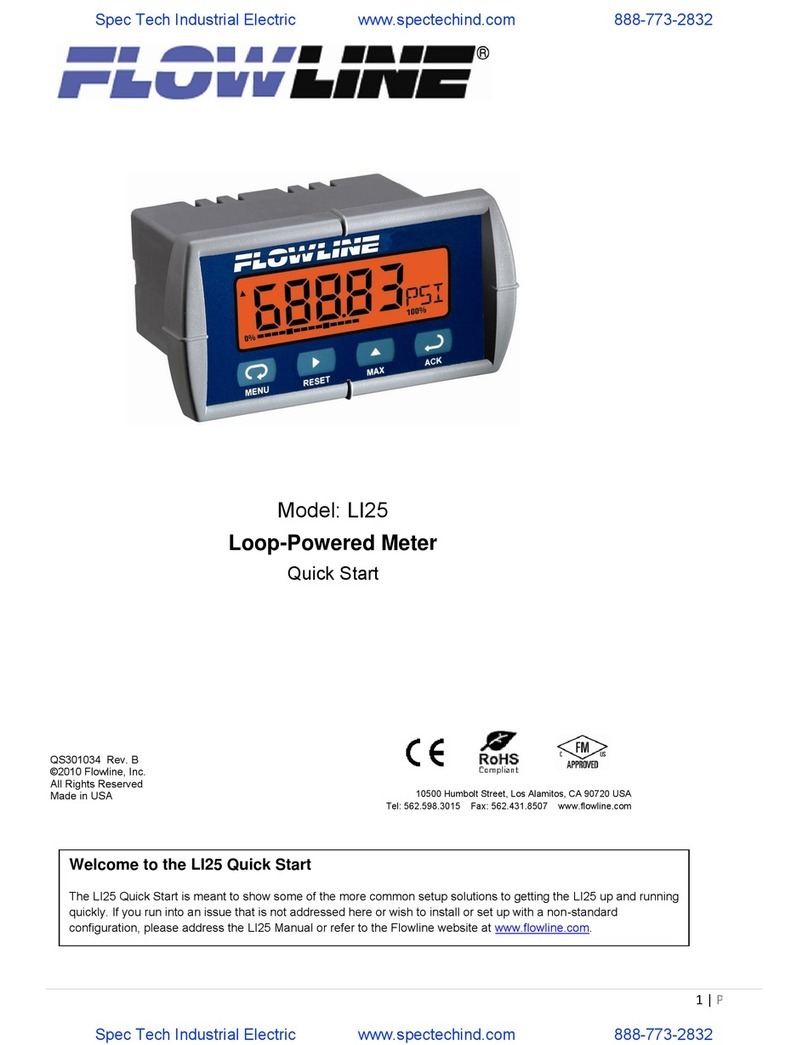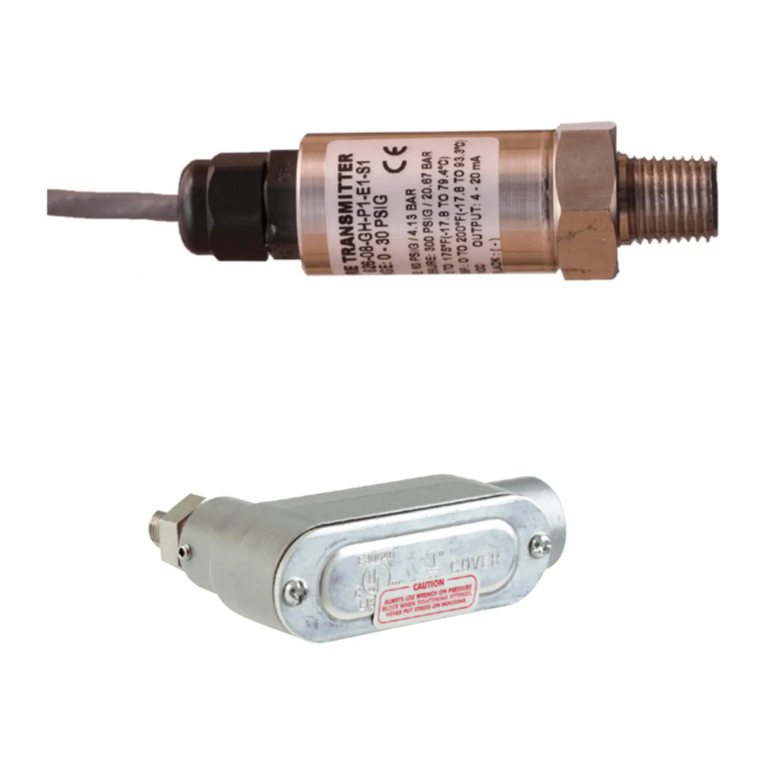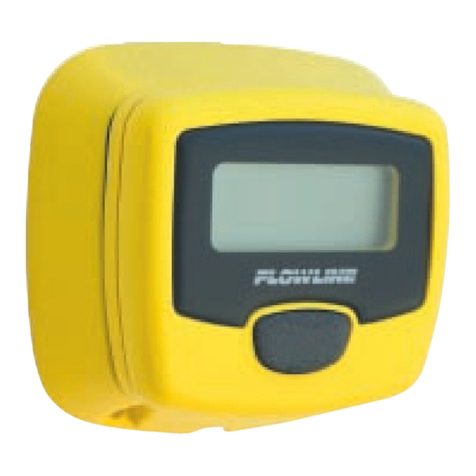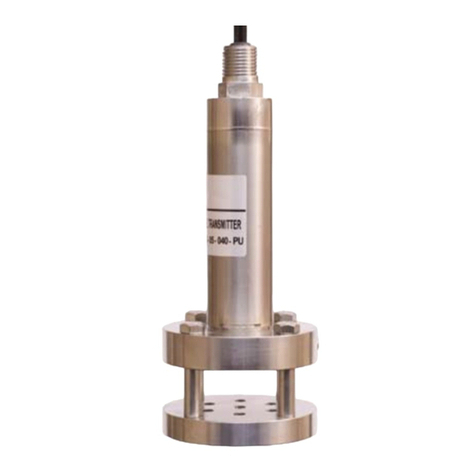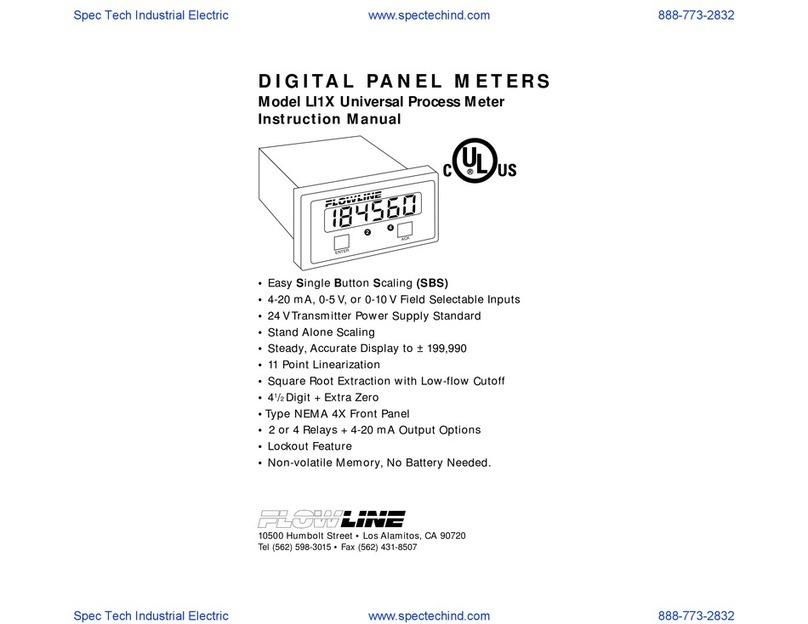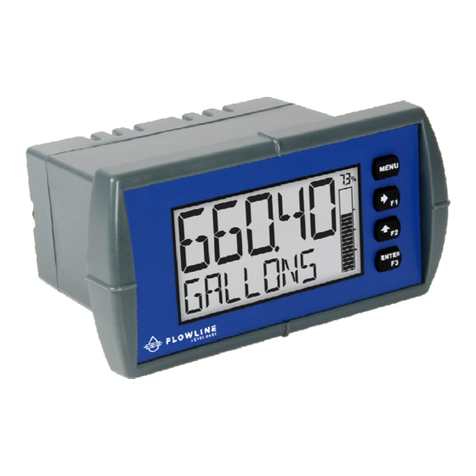Step Two Step Three
SAFETY PRECAUTIONS INTRODUCTION
About this Manual:
PLEASE READ THE ENTIRE MANUAL PRIOR TO
INSTALLING OR USING THIS PRODUCT. This manual
includes information on all versions of the Symprobe™ RF capac-
itance level transmitter from FLOWLINE: LP75-20_1. Please refer
to the part number located on the sensor label to verify the exact
model which you have purchased.
User’s Responsibility for Safety:
FLOWLINE manufactures a wide range of liquid level sensors and
technologies. While each of these sensors are designed to operate
in a wide variety of applications, it is the user’s responsibility to
select a model that is appropriate for the application, install it prop-
erly, perform tests of the installed system and maintain all compo-
nents. The failure to do so could result in property damage or seri-
ous injury.
Proper Installation and Handling:
Because this is an electrically operated device, only properly-
trained staff should install and/or repair this product. Use a proper
sealant with all installations. Note: Always install the 3/4” Viton
gasket with the LP75-2061. The G threaded version of the
Symprobe will not seal unless the gasket is installed properly.
Never overtighten the transmitter within the fitting. Always check
for leaks prior to system start-up.
Material Compatibility:
The Symprobe™ enclosure is made of Polypropylene (PP). The
probe is coated with Fluorinated Ethylene Propylene (FEP). Make
sure that the model which you have selected is chemically compat-
ible with the application liquids it will contact. To determine the
chemical compatibility between the sensor and its application liq-
uids, refer to the Compass Corrosion Guide, available from
Compass Publications (858) 589-9636).
Wiring and Electrical:
Asupply voltage of 14-36 VDC is used to power the LP75 trans-
mitter. The system should never exceed a maximum of 36 volts
DC. Electrical wiring of the sensor should be performed in accor-
dance with all applicable national, state, and local codes.
Enclosure:
While the transmitter housing is liquid-resistant when installed
properly, it is not designed to be immersed. It should be mounted
in such a way that the enclosure does not come into contact with
fluid.
Flammable, Explosive and Hazardous Applications:
The LP75 transmitter systems should not be used within flamma-
ble or explosive applications.
Make a Fail-Safe System:
Design a fail-safe system that accommodates the possibility of trans-
mitter or power failure. In critical applications, FLOWLINE recom-
mends the use of redundant backup systems and alarms in addition to
the primary system.
About RF capacitance technology:
An revolutionary self grounding probe features two electrode plates
and a guard wire which are completely encapsulated in FEP. The
Symprobe generates a 1 MHz pulse-wave radio frequency signal from
the continuous capacitance probe. When liquid comes into contact
along the length of the probe, the capacitance as measured by the sys-
tem electronics changes. These changes in capacitance are based on
the length of the probe which is in the liquid, and the dielectric con-
stant of the liquid. FLOWLINE's sophisticated electronics convert the
capacitance value into a simple two-wire, 4-20 mAoutput which indi-
cates the level of the liquid in the tank.
The transmitters operation may vary based on the dielectric properties
of different application liquids. The LP75 series transmitter is
designed for use with liquids having a dielectric value between 20 and
80 and factory calibrated in tap water. For example, if the application
liquid is acetal (with a dielectric constant of about 3.6), the transmit-
ter will not measure its presence when it is wet. However, if the appli-
cation liquid is glycol (with a dielectric constant of about 35) the
transmitter will reliably measure its presence when wet.
FLOWLINE's LP75 is not recommended for use with
electrically charged application liquids. For most reli-
able operation, the liquid being measured may need to
be electrically grounded.
Acetone 21
Acetoaldehyde 22.2
Acetyl methyl hexyl
ketone 28
Alcohol 16 to 31
Ammonia 15 to 25
Acetic acid 4.1 to 6.2
Butyl chloride 9.6
Barium chloride 9 to 11
Benzene 2.3
Benzine 2.3
Barium nitrate 5.6
Bromine 3.1
Chlorobenzene 4.7 to 6
Chlorotoluene 4.7
Chloroform 4.5 to 5.0
Chlorine, liquid 2.0
Carbon tetrachloride2.2
Cyan 2.6
Cyclohexane methanol
3.7
D.I. Water 20
Ethyl toluene 2.2
Ethyl alcohol 23
Ethylene glycol 37
Ethylene oxide 14
Ethylene dichloride
11 to 17
Ethylene chloride 10.5
Ethyl acetate 6.4
Ethyl salicylate 8.6
Ethyl stearate 2.9
Ethyl silicote 4.1
Formic acid 59
Ferric oleate 2.6
Freon 2.2
Glycerine 47
Glycol 30
Glycol nitrite 27
Gasoline 2 to 2.2
Hydrochloric acid 4.6
Isobutyric acid 2.7
Isobutyl methyl ketone 13
Jet fuel 1.7
Lead carbonate 18
Lead nitrate 38
Methyl salicylate 9.0
Methanol 33
Methyl alcohol33 to 38
Margarine, liquid
2.8 to 3.2
Methyl acetate 7.3
N-butyl formate 2.4
Nitrobenzene 26 to 35
Nitrotoluene 25
Naphthalene 2.3 to 2.5
Oils, vegetable2.5 to 3.5
Oils, mineral 2.3 to 2.4
Oils, petroleum
1.8 to 2.2
Oleic acid 2.5
Propane, liquid
1.8 to 1.9
Potassium nitrate
5.0 to 5.9
Potassium chloride 5.0
Stearic acid 2.3
Toluene 2.4
Trichloroethylene 3.4
Trichloroacetic acid 4.5
Terephthalic acid
1.5 to 1.7
Thinner 3.7
Urea 3.5
Vinyl chloride 2.8 to 6
Vinyl alcohol 1.8 to 2.0
Water, 20°C 80
Water, 100°C 48
WARNING
The Symprobe™ is shipped factory calibrated with 4 mA set at
the end of probe. To reverse setting with 20 mA at the end, set
invert to On and re-calibrate transmitter.
Avoid installing the Symprobe™ within 6" of any metallic object.
Metal will adversely affect the dielectric sensitivity of the trans-
mitter.
The FEP coating for the Symprobe™ is a thin sheath. Extreme
caution is recommended at installation. Breaking the seal would
damage the probe.
Always install the 3/4” Viton gasket with the LP75-2061. The G
threaded version of the Symprobe will not seal unless the gasket
is installed properly.
Table of Common Dielectric Constants:
NOTE: The Symprobe is best applied with conductive liquids
greater than 100 micro-mhos and/or nonconductive liquids with
dielectric constant greater than 20.
